Investigating web attacks as a SOC Analyst - Possible SQL Injection
In this writeup we will be investigating a security alert related to SQL Injection on LetsDefend plateform. Let’s start 🎯
Security Alert
Alert
The case we’ve been assigned is an SQL Injection alert with some details such as event ID, source and destination IP address, the URL requested and much more as shown in the screenshot below :
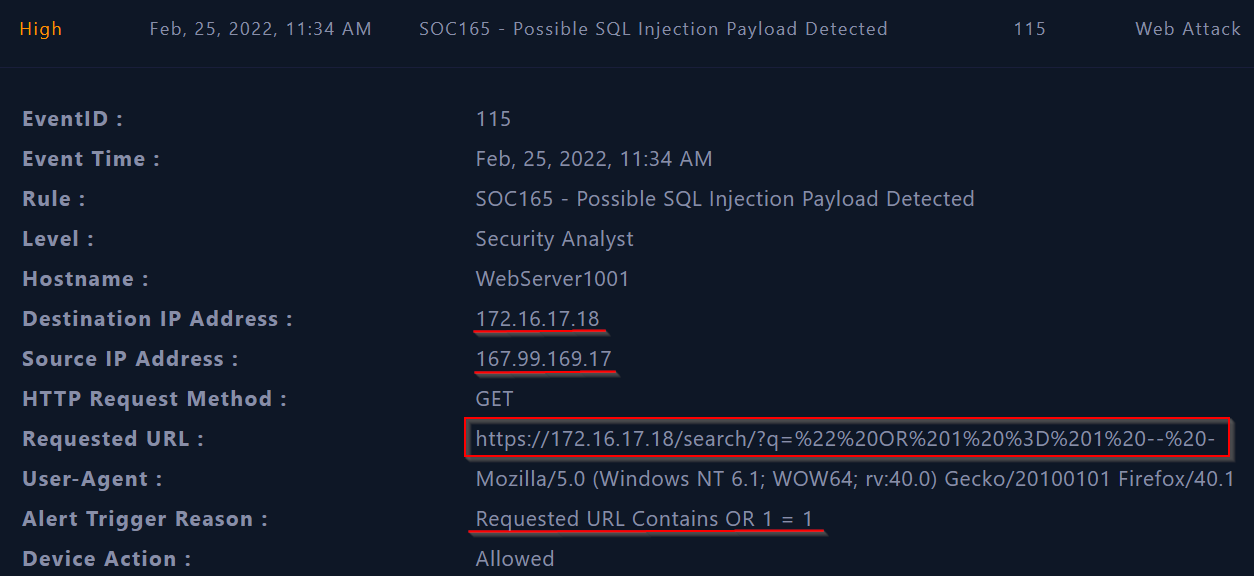 |
|---|
| incident details |
Understand Why the Alert Was Triggered
In order to perform a better analysis and to determine whether the triggered alert is false positive, it is first necessary to understand why the rule was triggered. We can examine the rule name to identify the attack we’re facing and understand the direction of traffic, the IP addresses,etc.
From the incident details we can extract some key information like the requested URL that contains some strings related to SQL Injection, the attacker IP address (source IP) which is 167.99.169.17 and the victim IP address (destination IP) which is 172.16.17.18
It’s time to start the analysis and detection phase !
Detection and Analysis
Examine Logs
In the log management pane I searched for all the events related to this case trough the following query :
 |
|---|
| Log Search Query |
I found 6 events. Let’s analyze all of them :
🚩 First event:
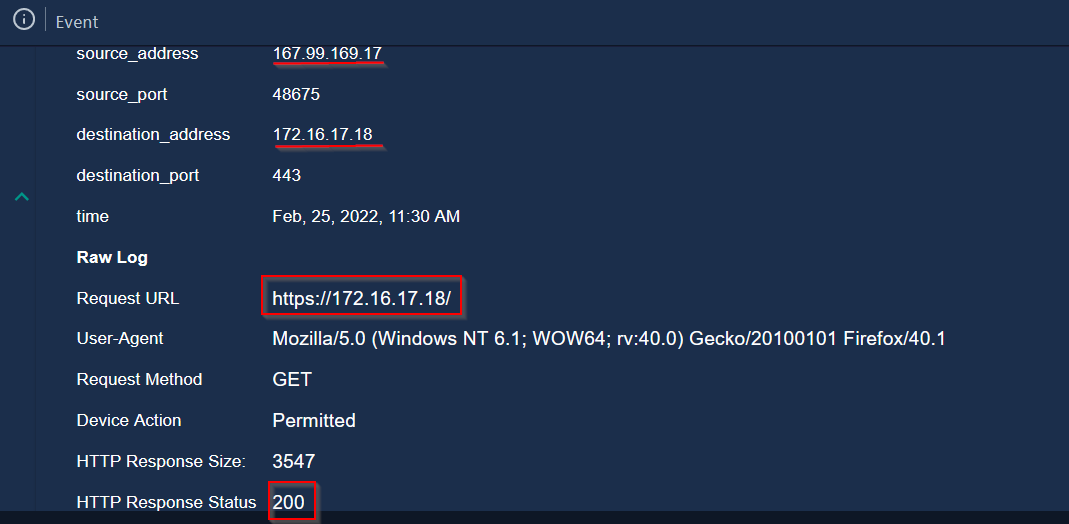 |
|---|
| First event |
Here the attacker has accessed directly the victim URL and the response was 200 (OK).
🚩 Second event:
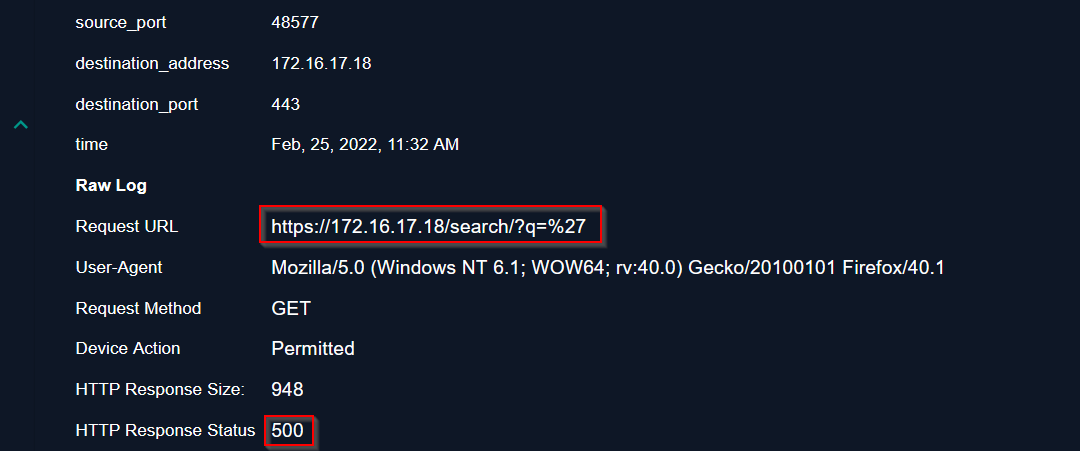 |
|---|
| Second event |
The attacker requested a sub-page of the same URL but it seems to be suspicious.
🚩 Third event:
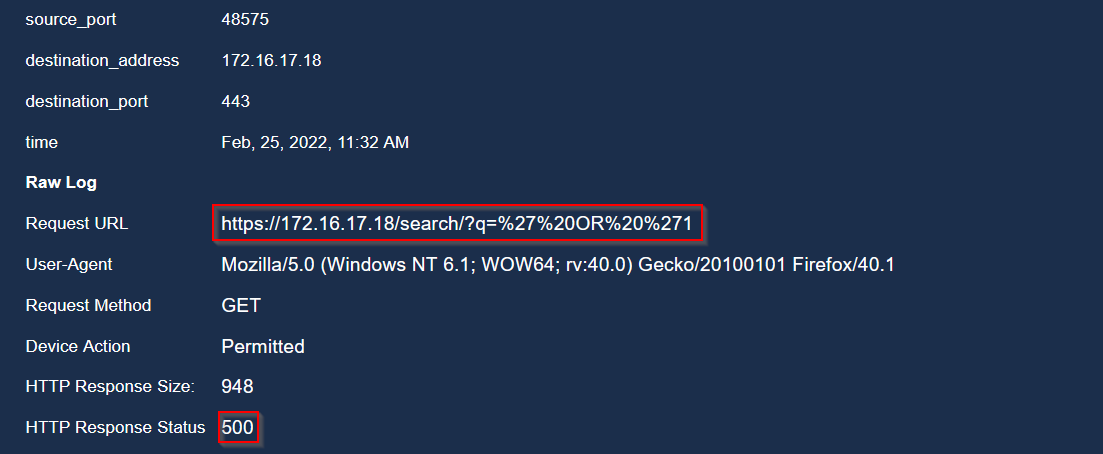 |
|---|
| Third event |
Another sub-page with another string characters. I used the online URL decoder urldecoder.org to decode these URLs :
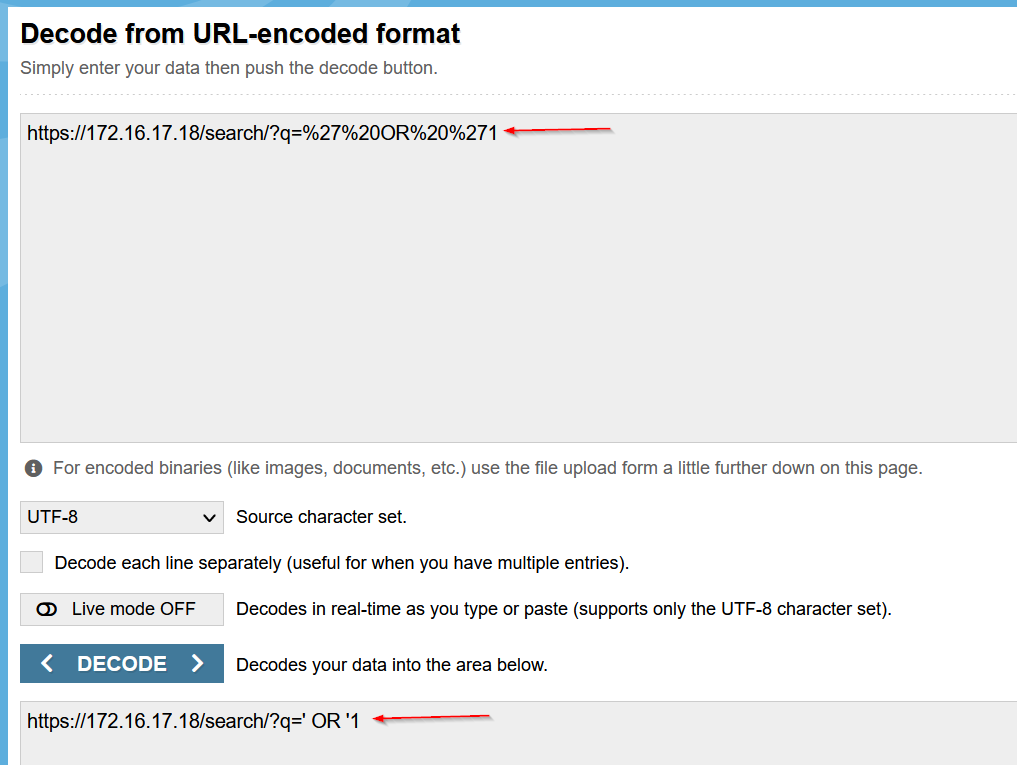 |
|---|
| decoded URL |
It’s an SQL Injection payload !
🚩 Fourth event:
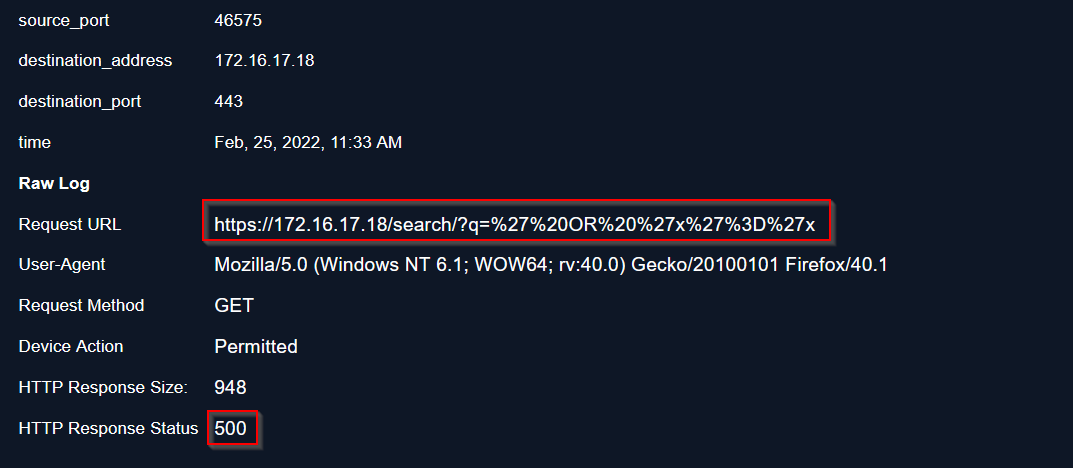 |
|---|
| Fourth event |
Server response is 500 => Injection was unsuccessful.
🚩 Fifth event:
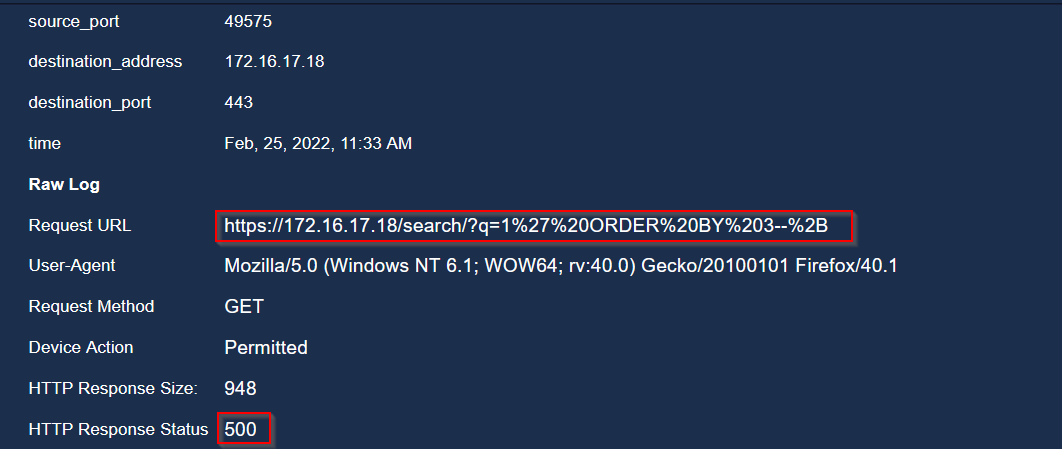 |
|---|
| Fifth event |
 |
|---|
| decoded URL |
Server response is 500 => Injection was unsuccessful.
🚩 Sixth event:
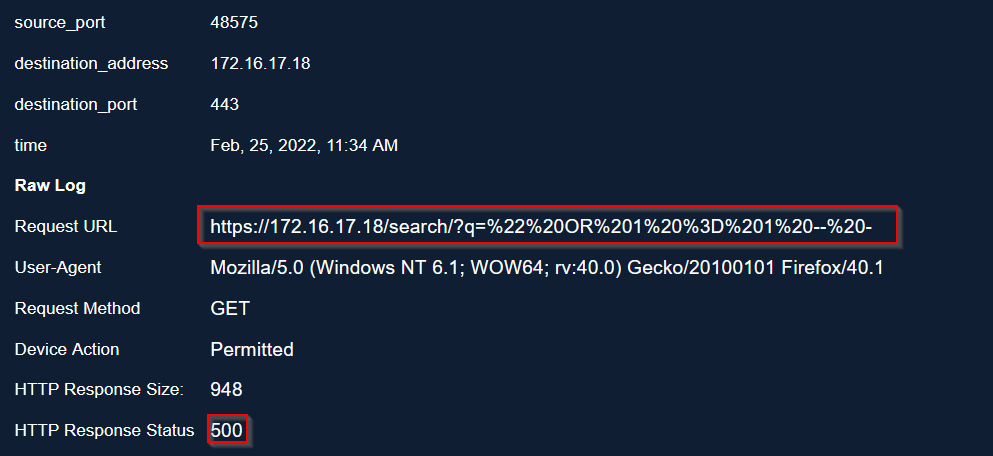 |
|---|
| Sixth event |
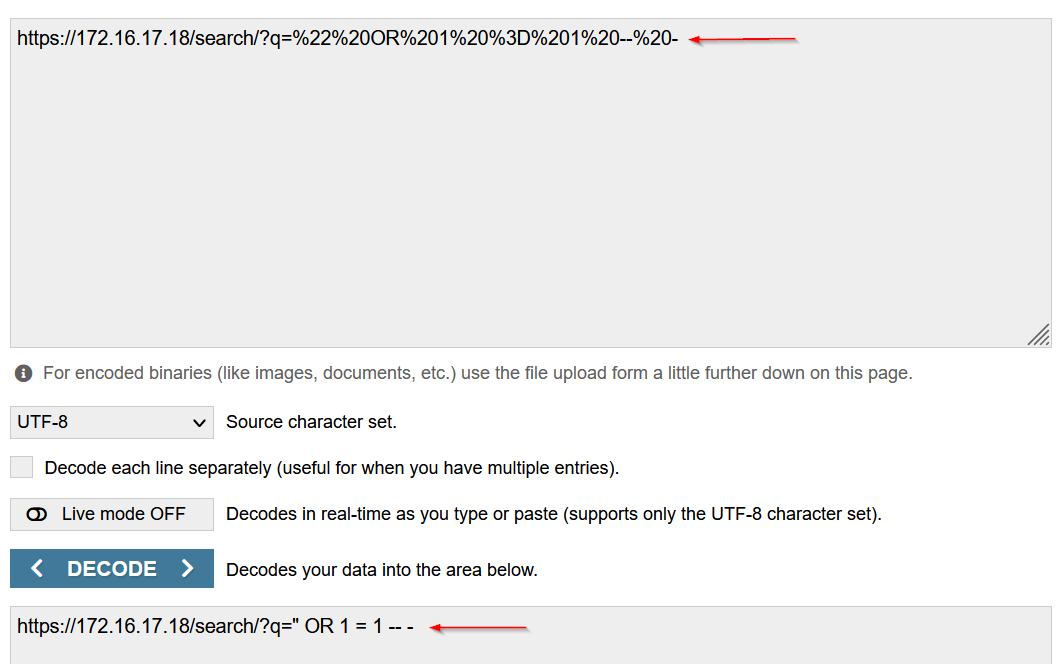 |
|---|
| Sixth event |
Server response is 500 => Injection was unsuccessful.
📌 Summary of requested URLs:
| Reuested URL | Reuested URL After Decoding |
|---|---|
| 172.16.17.18/search/?q=%27 | 172.16.17.18/search/?q=' |
| 172.16.17.18/search/?q=%27%20OR%20%271 | 172.16.17.18/search/?q='OR '1 |
| 172.16.17.18/search/?q=%27%20OR%20%27x%27%3D%27x | 172.16.17.18/search/?q=' OR 'x'='x |
| 172.16.17.18/search/?q=1%27%20ORDER%20BY%203--%2B | 172.16.17.18/search/?q=1' ORDER BY 3--+ |
| 172.16.17.18/search/?q=%22%20OR%201%20%3D%201%20--%20- | 172.16.17.18/search/?q=" OR 1 = 1 -- - |
After URL Decoding, it’s confirmed that it is SQL Injection
IP Reputation
I will check the source IP reputaion on ViruTotal and AbuseIPDB:
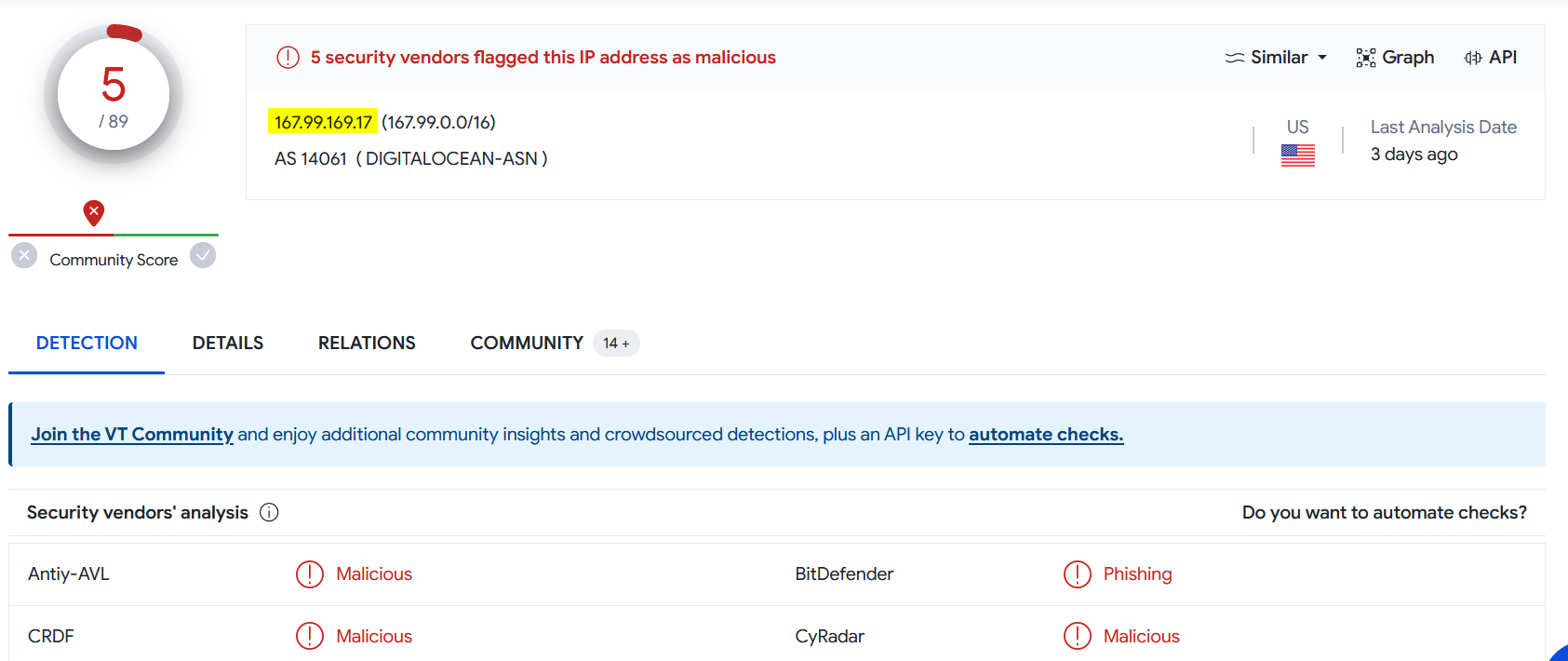 |
|---|
| IP Reputation on ViruTotal |
 |
|---|
| IP Reputation on AbuseIPDB |
The source IP address is definitely malicious !
Further Investigation
As we can conclude from previous log analysis that the HTTP response is 500 essentially meaning that the server side could not fulfill the request. Thus, the SQL injection did not work. But we can conduct some further investigations by looking at the “Command History” of the relevant device via Endpoint Security. In SQL Injection attacks, attackers can run commands on the
device with the help of functions such as "xp_cmdshell".
Let’s check the Command History of the target IP:
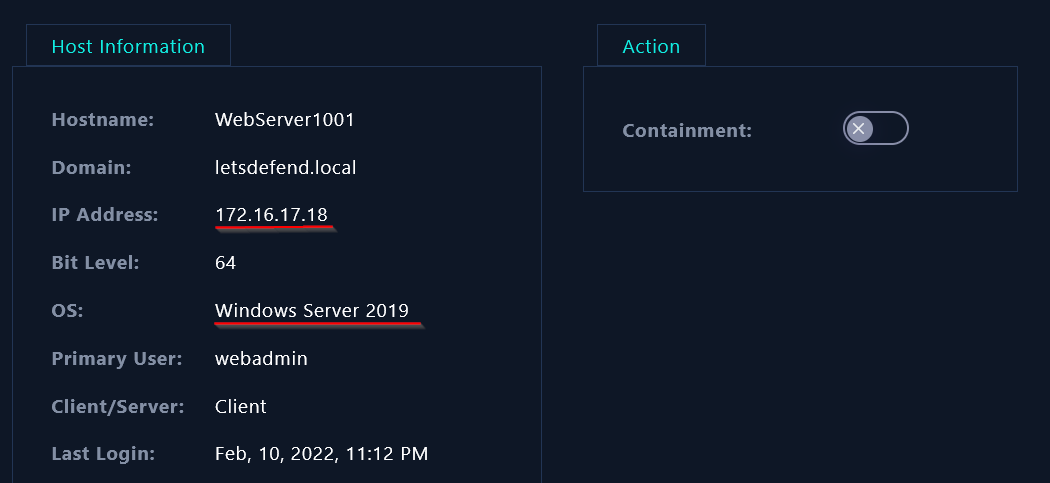 |
|---|
| Target Endpoint Information |
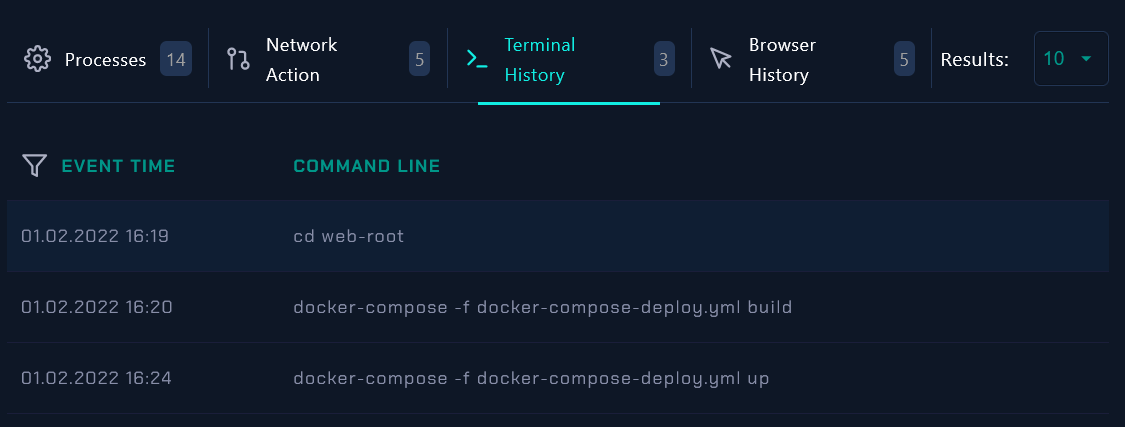 |
|---|
| Terminal History |
The Command History of the target IP is clean. From all the previous analysis and investigations we can confirm that the SQL Injection attack was unsuccessful.
Do We Need Tier 2 Escalation?
Tier 2 escalation should be performed in the following situations:
- In cases where the attack succeeds,
- When the attacker compromises a device in the internal network (in cases where the direction of harmful traffic is from inside → inside)
Tier 2 escalation is not required in the following cases:
- In cases where attacks from the Internet do not succeed
Institutions may have their own escalation procedure. Professional analysts should learn about the escalation procedure in their institution.
In our case No Tier 2 Escalation is needed to be performed.
Artifacts
I will add the attacker IP address (source IP) as an artifact to our EDR (Endpoint Detection and Response) tool.
 |
|---|
| Adding artifacts |
Playbook
A security playbook is a list of required steps and actions needed to successfully respond to any incident or threat.
We will answer the following questions :
- Is Traffic Malicious? Yes, Malicious
- What is the attack vector in the malicious traffic you have detected as a result of your investigations? SQL Injection
- Is the malicious traffic caused by a planned test? Not Planned
- What Is the Direction of Traffic? (Format: Source -> Destination) Internet -> Company Network
- Was the Attack Successful? No
- Do You Need Tier 2 Escalation? No
Close Alert
Finally, the incident is identified as True Positive (TP) and was mitigated successfully. We can close the alert !
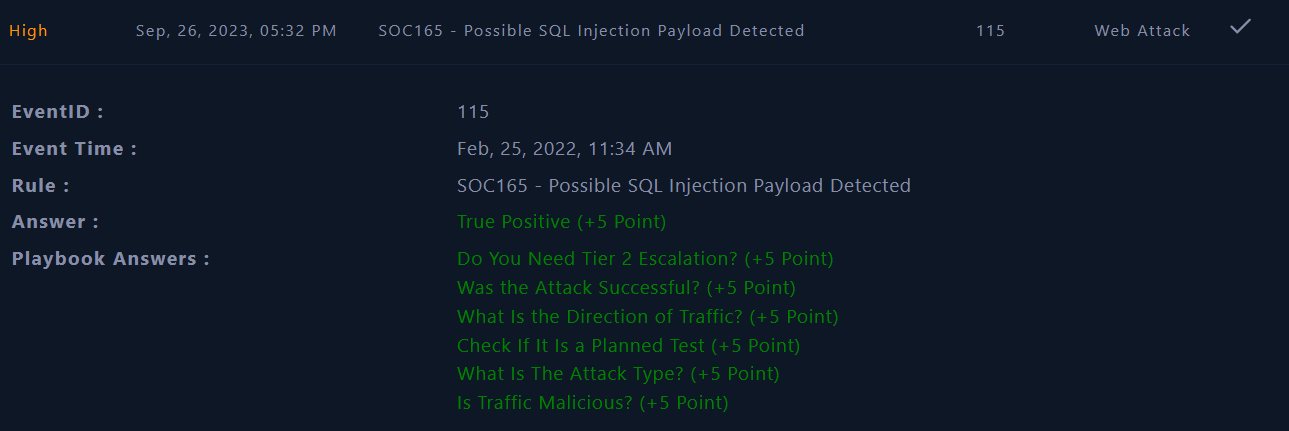 |
|---|
| Alert closed |
Challenge Report
Personal Challenge Report on LetsDefend
![]()
“To beat a hacker, you have to think like a hacker” 💙



